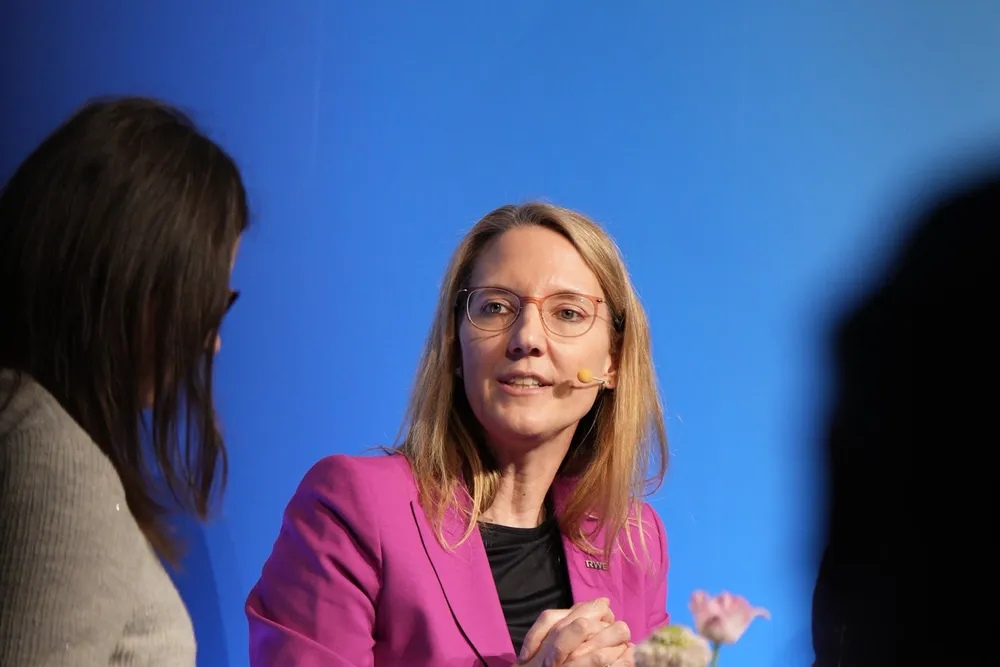Wind chiefs warn over red tape and costs danger in EU green measures
Europe tends to make things complicated, RWE Renewables chief Wünschel says, while ZF Wind Power chief says carbon levy will add costs

Efforts by the EU to strengthen Europe’s wind supply chain through a carbon border tax or non-price criteria at tenders contain an inherent danger of adding red tape and costs for developers and suppliers, executives told the WindEurope 2025 conference.
The European Commission when presenting its Net Zero Industry Act (NZIA), included the stipulation that member countries in their renewables auction systems allocate 30% of the tendering volume according to non-price criteria.
Both measures have prompted warnings from at least parts of the wind industry.
NZIA is “a great opportunity – to see it in a positive way – that we really can diversify sourcing, and really now have the chance to build up local content, European supply,” RWE Renewables Europe and Australia CEO Katja Wünschel told a panel at the WindEurope event in Copenhagen.
But the EU also has a tendency to make things complicated, and the Commission’s proposal in the form that is on the table now “has a high risk to make it extremely complex, and this is where we really have to pay attention”.
Looking at what kind of non-price tendering criteria are to be included, there is a “really high potential for cost increase, creating more bureaucracy and also slowing down growth,” Wünschel cautioned.
As 30% of the auction volume is supposed to be allocated according to non-price criteria, the other 70% of price-based volume is remaining in the system, which could make things “too complicated”.
“It's a burden for the OEMs,” she said.
In Germany, for example, about four onshore wind auctions are held per year, with hundreds of participants, which all have to fulfil those criteria for “each and every project”, Wünschel said, adding that these also all need to be cleared by the authorities, adding additional burden on an already strained public sector.
“And what is pre-qualification? What is an award criterion? How is it weighted? And then, create the merit order of who is in the auction and who is not in the auction? This is a bit scary, I would say.
“Therefore, we really push hard to keep it simple, keep it pragmatic.”
In some EU member states, developers would have to re-apply for permits granted in the past to fulfil the criteria, she added.
Wünschel instead pleaded for a step-for-step approach to make sure the supply chain can cope with the new criteria.
Carbon Border Adjustment Mechanism
The Carbon Border Adjustment Mechanism (CBAM) could become yet another “supply chain restriction” or “just another burden on top”, Felix Henseler, CEO of gearbox maker ZF Wind Power warned.
Since January (when US President Donald Trump started his second term), global uncertainties have popped up on a daily basis, he said.
“Therefore, the request is really, we need speed, and we need the right mechanism in Europe to secure our industry here. Otherwise, it will be an uphill battle, which will be tough to win.”
But CBAM, instead of helping, would be “quite a hit for us”, Henseler said and “increase the cost of a wind turbine by roughly €900,000 ($980,896) in Europe”.
Instead of the carbon border tax, EU and member states should provide additional levers to push up demand for wind turbines in all countries, he said.
“I vote for trying all mechanisms to first bring volume up in Europe. This is really necessary to strengthen our supply chain,” Henseler said, adding that the real threat is that China has four times the market size, which makes a level playing field difficult.
“If you install four times less than your toughest competitor, you don’t have the lever they have, starting with engineering capacities and ending up with fixed costs.”
(Copyright)